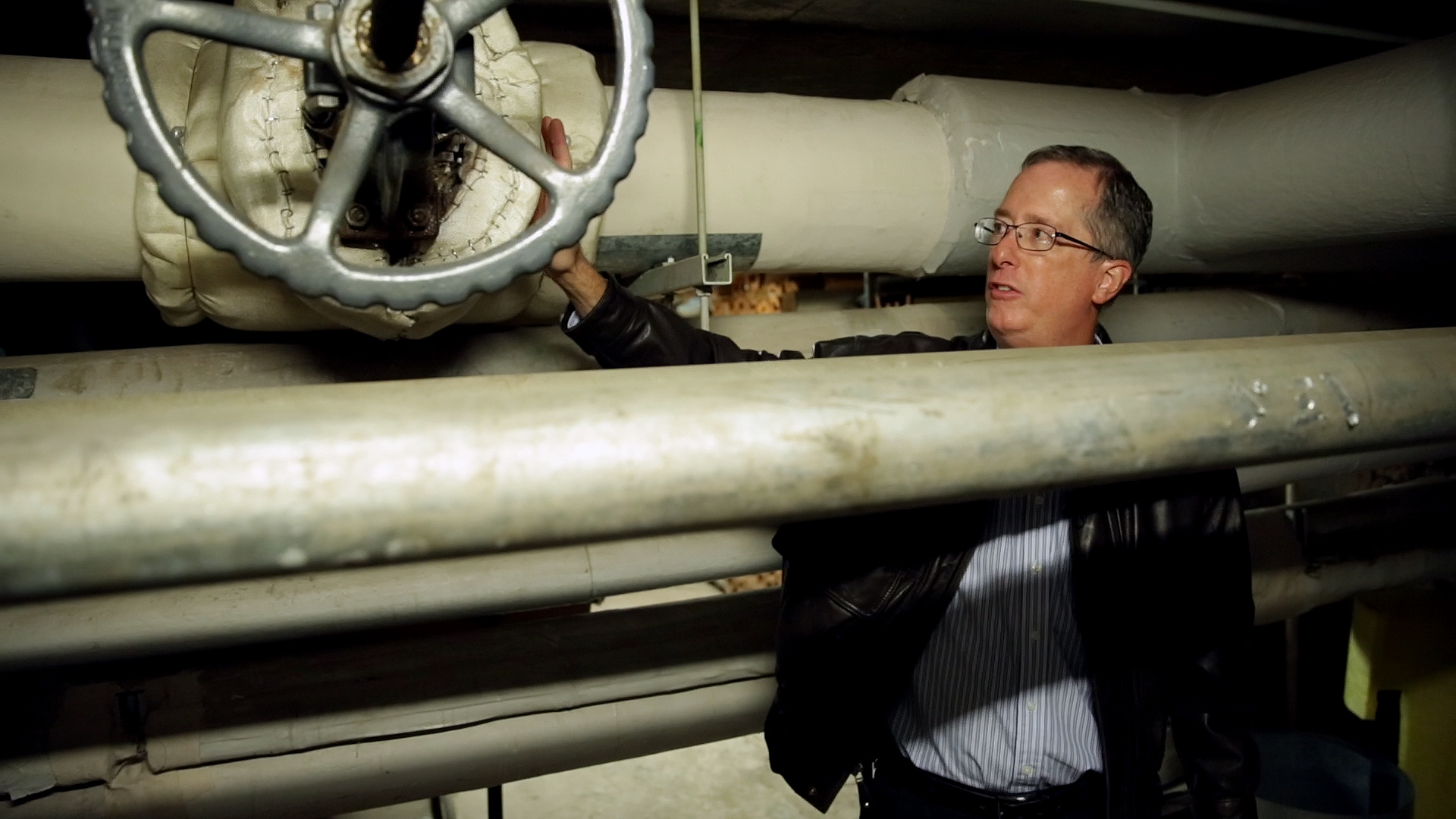If you’ve ever wondered why locked plastic boxes guard thermostats in some of the classrooms on Arizona State University’s Tempe campus, there’s an easy answer: Management doesn’t want you to use them to adjust the temperature.
The answer to that answer is a little more complicated, and harder to find. But there it is, 10 to 15 feet underground and inside the five, 80-year-old concrete tunnels that shoot out from the center of the campus under the Central Plant.
Yes, to the surprise of many, ASU has its own tunnel system — one that measures five miles long and stretches from Sun Devil Stadium to Apache Boulevard.
“A lot of tunnels have been here as long as the campus has, but more tunnels have been added to serve the energy needs of the campus as it expanded,” said Rick Pretzman, a facilities management director for the university.
Running along the subterranean walls are industrial-grade pipes, which funnel steam throughout the campus. The steam provides heat to the school’s buildings, but it’s a very sensitive system, according to Pretzman.
“If you change the temperature in one classroom, it is likely to set off a domino effect to the other classrooms in the building,” he said.
Which is why they don’t want people adjusting the thermostats to make the day a little warmer, or colder.
“They’re mostly only adjusted by facilities management personnel, which they can do in person or remotely.”
You could say the same about the tunnels, which are a restricted space where unauthorized personnel are not allowed. And while you might hear that about various places on campus, the tunnels really are someplace you don’t want to sneak into for the fun of it.
Pressure monitors and motion sensors are in place along the corridors to alert employees of the exact location of an intruder.
“We try to discourage students from coming down here to explore,” Pretzman said. “Once they’re down here they usually discover pretty quickly that it’s not a place they want to be.”
And it’s not just because trespassers are turned over to the police.
Rick Pretzman, a facilities management director for ASU, explains the pipe setup at the entrance of the tunnels underneath the university. Photos by Kenneth Fagan/ASU Now
Inside the passageways are hazardous materials and dangerous machinery — not to mention scalding steam and hot pipes. Because of these factors, everyone who enters the tunnels is required to wear proper equipment, including a respirator. (The ASU Now video crew went only so far as the entrance to the tunnels.)
Such conditions require proper maintenance and upkeep, which is why the tunnels and Central Plant undergo thousands of maintenance procedures each year to fix everything from leaking pipes to faulty wiring.
“We have operators walking the perimeter of the Central Plant at least once an hour to check for anything that might be wrong,” said Pretzman.
Up above at the Central Plant the environment has the feel of a factory. A maze of pipes and valves stretch across the expanse of the interior, leaving little headroom but a lot to see.
“We use more power at night to take advantage of the lower rates,” Pretzman said, referring to energy used by the plant to regulate building temperatures and provide them with electricity.
“Ninety percent of the cooling and heating for the Tempe campus comes from the Central Plant,” Pretzman said. “We also supply the power for 20 to 30 of the buildings. The entire plant requires people working on it around the clock to keep it running, and the workload is broken up between three shifts of employees.”
The electricity the plant provides comes from the Arizona Public Service Co. (APS); then the Central Plant distributes it throughout campus via the tunnel network.
“Because the Central Plant’s power supply comes from APS, we do lose power when they do, typically during bad storms,” said Pretzman. “But there is a spot on campus where we produce our own power with natural gas: the Combined Heat and Power plant, which isn’t affected by bad weather.”
Interesting, but perhaps not as mystifying or fascinating as these secret tunnels under the Tempe campus.
“We don’t try to keep it a secret, but we also don’t advertise ourselves,” Pretzman said. “The reason being is only facilities management personnel need to be down there, plus the steam and power lines can hurt people."
Video by Ken Fagan/ASU Now.
More University news

‘The time to change the future is now’
More than two decades ago, Arizona State University reimagined higher education by evolving into a university focused on inclusion rather than exclusivity and combining broad access and excellence…

3 ASU students earn Goldwater Scholarships for STEM research excellence
Three Arizona State University students have been named Goldwater Scholars for 2025, placing them among the nation’s most promising undergraduates pursuing research careers in science, engineering…

Provost Teaching Awardees, Charter Professors empower local communities, students
The ASU Charter embodies the university’s commitment to student success and research of public value and responsibility to the community. In recognition of its importance, each year, Executive…



